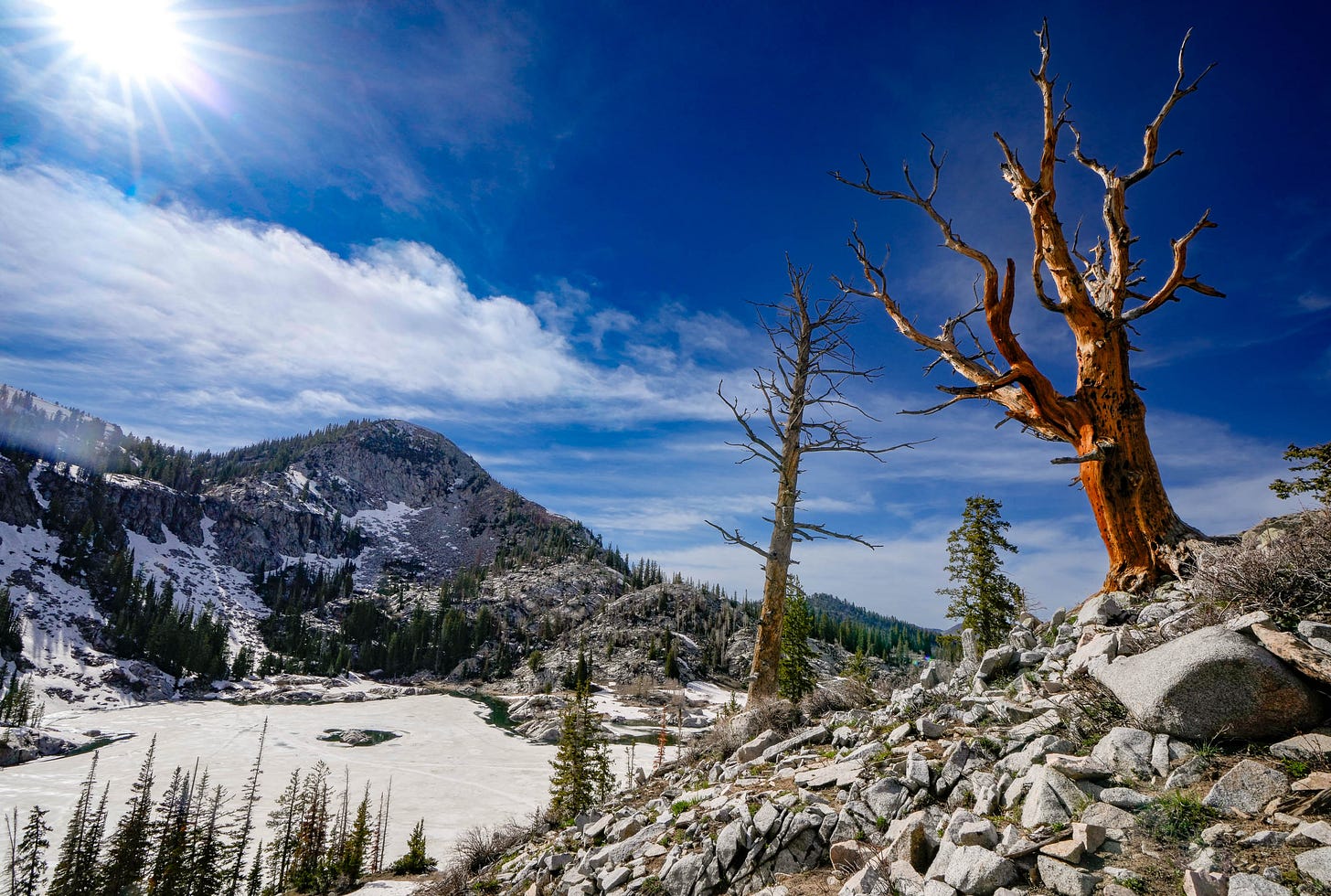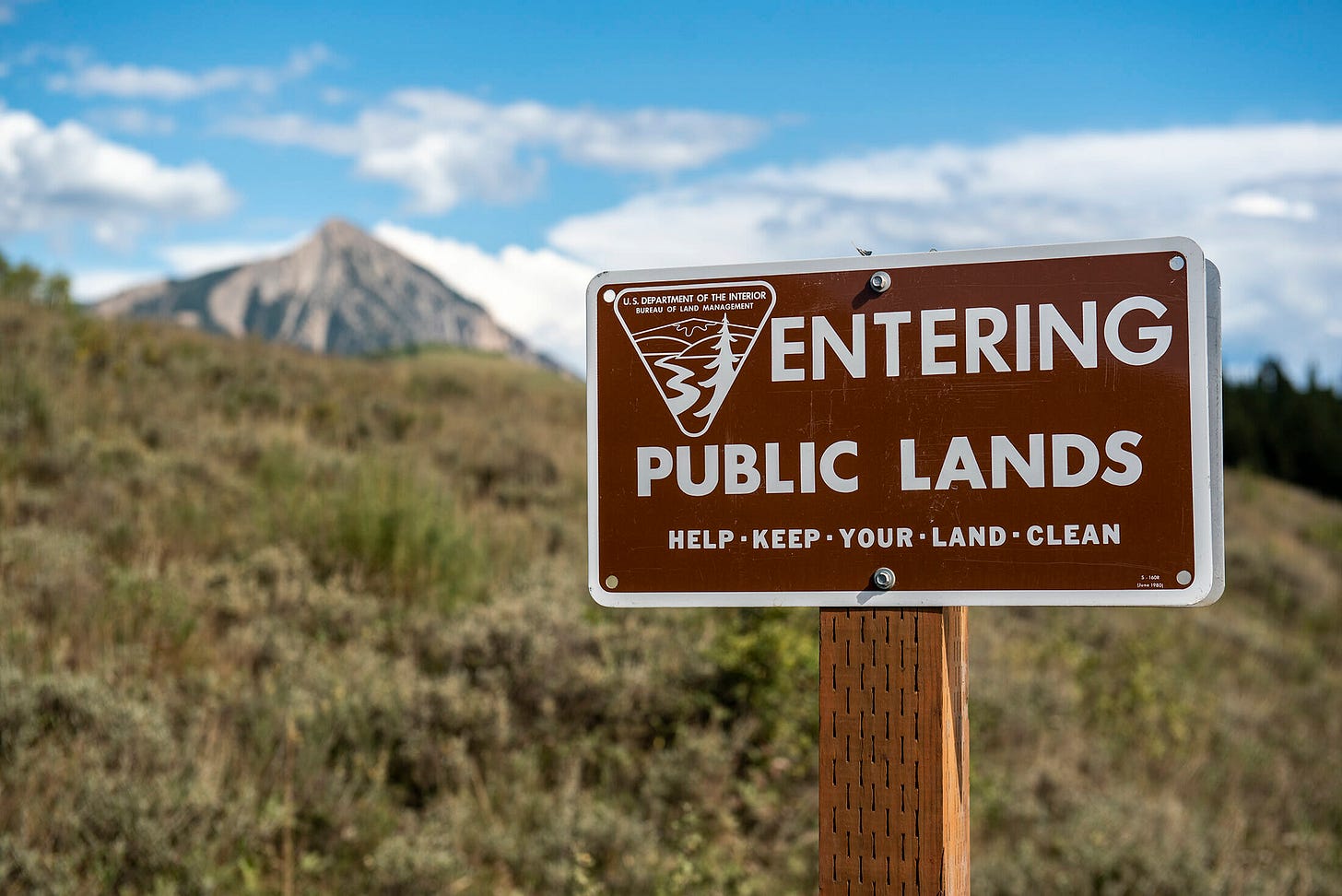Jonathon Klein loved to get lost on dirt bike trails in Utah. Or hunt deep in its mountain canyons. He fished in alpine streams and trekked across expanses of wilderness where scarcely another soul could be found. In his mind, these adventures helped him become the man he is today.
“I've made everlasting memories, all of which are thanks to Utah's great public lands,” Klein wrote in an open letter to Utah lawmakers. That’s why, he argued, public lands — which are owned and managed by the government for the use of citizens — should be preserved.
These lands are “worth keeping in public hands and not sold to those who'd bar us all from entry,” Klein wrote. “I'm optimistic that you'll hear your constituents who use these public lands to off-road, fish, hunt, camp, hike, snowmobile, ski, and so much more each year.”
Klein wrote the letter because Mike Lee, a senator from Utah, has drafted legislation to sell public lands for the stated purpose of developing housing.
The proposal was originally introduced as part of the Senate’s One Big Beautiful Bill Act. As written, it would force the Bureau of Land Management (BLM) and the US Forest Service to make between 0.5% and 0.75% of their land holdings in eleven Western states available for purchase over the next five years.
The parcels to be sold would be chosen from among the 258 million acres of eligible land by the secretaries of agriculture and the interior, after consulting with state and local governments and Native American tribes. That land includes hiking and walking trails, fields where livestock graze, and, in Lee’s home state, popular ski areas. (National parks, monuments, preserves, memorials, and conservation areas are excluded.)
No guarantee of affordable housing
Sold parcels are meant to be “used solely for the development of housing or to address associated infrastructure to support local housing needs.” A fact sheet released about the proposal says the sale of public land would “increase the supply of housing and decrease housing costs for millions of American families.”
Lee has previously said that the sale if just 1% of Utah’s public land managed by BLM were made available for houses, at least 774,000 additional homes could be built. In a press release about a previous, similar bill that was not passed, Lee said, “By increasing access to affordable land, states and local governments can flexibly address housing shortages or affordability in their own unique ways — low-income housing, condominiums, apartments, single family homes, etc.”
And Senator Lee is not wrong that there is a severe shortage of affordable housing. Pew Research Center reported in 2023 that 31.3% of American households were cost-burdened, meaning that they spent more than 30 percent of their income on housing expenses. Between the first quarter of 2024 and the first quarter of 2025, US house prices rose 4%, according to the US Federal Housing (FHFA) House Price Index. The Commerce Department says there is a national shortage of 4.5 million homes, and in March, monthly housing payments hit an all-time high.
Lee’s current language requires the buyer to provide a description of their plan for the land, including “the extent to which the development of the tract of Bureau of Land Management would address local housing needs (including housing supply and affordability) or any associated community needs.” And it says it will give “priority” determination to parcels that are adjacent to developed areas, already have existing infrastructure, or are nominated by state or local governments. But there is no rule that those parcels must be chosen.
Development is “not limited to affordable housing, and it's not limited to any particular type of housing,” Chris Winter, executive director of the Getches-Wilkinson Center for Natural Resources, Energy, and the Environment University of Colorado Law School, told The Preamble. So it could still “end up being luxury homes, vacation rentals, potentially resort development if there's associated housing, or maybe affordable housing, but there's no limitations on what housing means. There's no definition.”
Winter argued that this problem is compounded by a lack of public input into the sale decisions. “There's no public comment requirement or meaningful public process,” he said. “It's like the government takes nominations and then turns around and says, ‘These are the parcels we're selling,’ but there's no opportunity for the public to comment on whether those parcels are appropriate for affordable housing or any other kind of housing.”
“It just becomes private land,” Winter told The Preamble. That leaves the door open for the land to be bought by anyone, who can turn it into anything, because no one would be watching.
“It’s vague enough to be like, What’s that mean? Does that mean a water slide park?” Michael Carroll, BLM campaign director for the Wilderness Society, told The Preamble. He thinks the vagueness is by design, “so that they can kind of shoehorn in whatever type of development they would like to see, or sell it off to a billionaire who would like to buy it.”
There is a restrictive covenant in the bill, which requires that the purchaser use the land in the way they said they would. But there is no stated way to enforce the restrictions, nor does the current bill stipulate how long the restrictive covenant is enforceable.
“So the problem with that [the restrictive covenant] is that it's not in perpetuity,” Winter said. “It doesn't prevent the federal government from agreeing to lift the covenant later in time, and there's no other meaningful guardrails.” A previous version of the bill had a ten-year stipulation and an enforcement mechanism. Those were intentionally removed.
Lost recreation, damaged economies
Critics also worry that the plan could limit recreation opportunities and damage recreation-related businesses. Carroll said, “I'll give you the example in my community, here in Durango, Colorado, where I live. If they limit it to within two miles of the center of a municipality, what that effectively means is that all the areas that we recreate in — in my community, the reason that the vast majority of people live in Durango, Colorado, frankly, the access to these places that are right up our street — all of those areas are still up for sale and could be sold right even under that new limited stipulation.” He continued, “It would be a huge loss for us and those of us who live just around it [and] use it all the time.”
Recreation on BLM lands in 2021 supported approximately $11.4 billion in economic activity and 76,000 jobs.
Headwaters Economics, a nonpartisan research group, found that “public lands — from expansive protected federal areas to community parks and trails — can influence the socioeconomics of local communities in many ways and can be important economic assets. In addition to drawing tourists, public lands attract businesses, retirees, and workers who seek the recreational opportunities, scenery, and quality-of-life amenities that public lands generate.”
The group writes that “rural Western counties with more federal land perform better, on average, than their peers in population growth, employment, personal income, and per capita income.” If Lee’s proposal goes through, communities like Durango may be less able to enjoy these benefits.
Bipartisan opposition
Selling public lands is broadly unpopular with voters. A poll from this month found that 75% of Americans — 65% of Republicans and 88% of Democrats — oppose permanently selling off millions of acres of public land for development.
So it’s not surprising that Lee’s proposal has opponents in both parties. Idaho’s Republican senators, Jim Risch and Mike Crapo, came out against the bill, as did Senator Steve Daines, a Republican from Montana. Democrats also oppose the bill. Senator Martin Heinrich, the ranking Democrat on the Energy Committee, said, “I don’t think it’s clear that we would even get substantial housing as a result of this. What I know would happen is people would lose access to places they know and care about and that drive our Western economies.”
In response to the criticisms, Senator Lee tweeted late Monday night that he was working on changes to the proposal that would greatly reduce the amount of land available for sale. In particular, all Forest Service land would be ineligible, and BLM land could be sold only if it were within five miles of a population center.
(The Preamble reached out to Lee’s office to ask what freedom zones are but did not receive a response.)
Lee hit another roadblock this week when the Senate parliamentarian said that the proposal could not be included in the budget bill after all because it does not directly affect the budget. In response, Lee said he would continue to revise the bill in light of public feedback and the parliamentarian’s objection, with the hope of keeping it in the budget bill.
Carroll doesn’t think Lee’s announced changes will be enough to preserve the lands on which his community depends. “If they limit it from 250 million acres to 10 million acres… they're still selling millions of acres.” And once it’s gone, it’s gone forever.









If housing is really the goal, there are tens of thousands of empty malls, shopping centers etc, that could be used instead of federal land. It’s not remotely because of housing, just another example of “rewarding” billionaire donors.
Lack of land isn't the primary reason we have an affordable housing crisis.
Public lands should not be for sale!
Tariffing the hell out of materials that we use to build houses and then disappearing all of the people who actually build the houses certainly will exacerbate the issue though. Maybe Mike should be focusing on that.